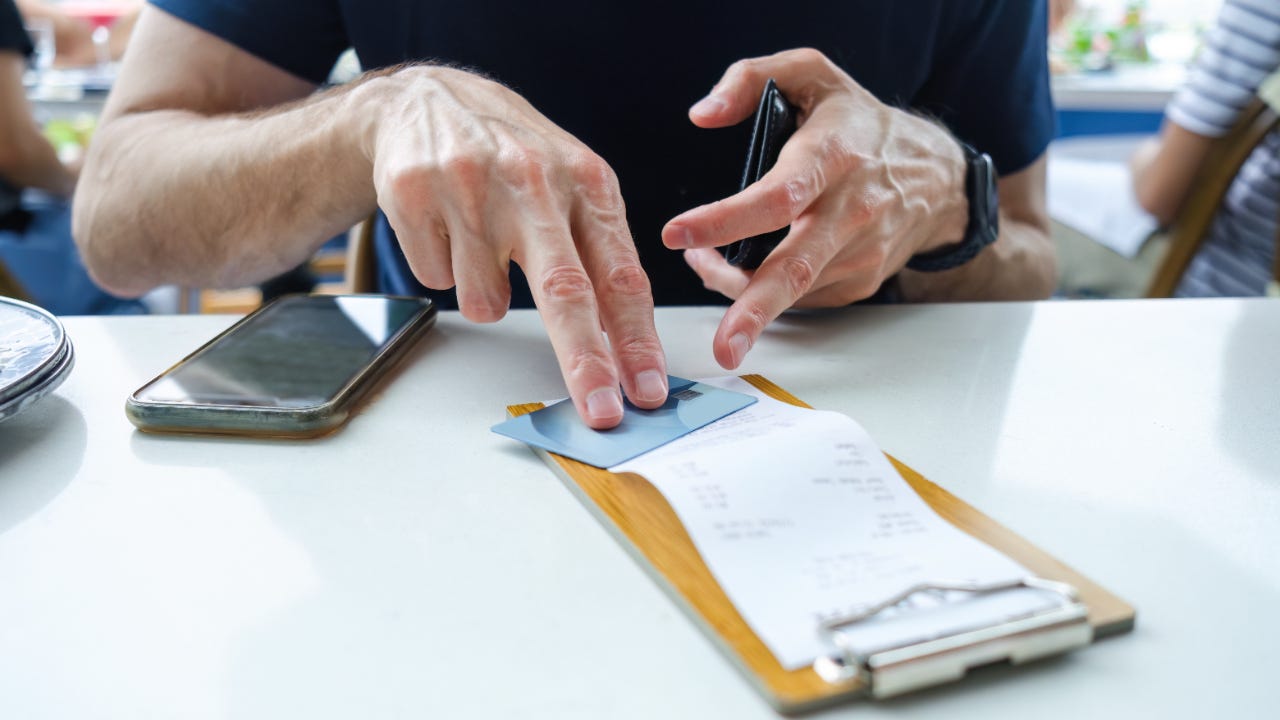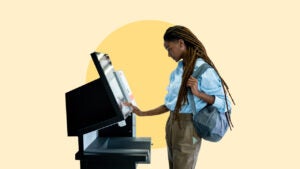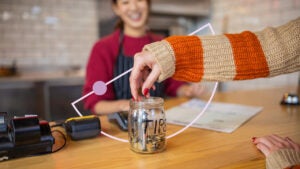Americans are tipping less, despite growing requests for gratuities

Americans’ tipping habits have really gone downhill, according to the latest edition of Bankrate’s annual tipping survey. I think it’s particularly shocking that only 65 percent of diners at sit-down restaurants always tip the waitstaff. That leaves 18 percent who tip most of the time, 12 percent who sometimes tip and 5 percent who never tip.
Four years ago, 77 percent of diners always tipped their waiter or waitress. The decline since 2019 has been significant and broad-based. Other service-industry professionals, such as hair stylists/barbers, food delivery people and taxi/rideshare drivers, have experienced similar drops in terms of how frequently they are tipped. Sit-down restaurants actually represent the most common tipping venue, even though more than a third of restaurant-goers skip the tip at least some of the time.
Only 53 percent of customers at hair salons or barber shops always tip, along with 50 percent of people who order food delivery and 40 percent who take taxis/rideshares. These are all situations in which I think people should tip every single time. Generally speaking, I believe that 20 percent is an appropriate tip.
You could maybe go a little lower for something like food delivery, or if the service was subpar, but you should almost always give something. It’s shocking that so many people are not tipping, especially young adults. For example, only 35 percent of Gen Zers and 50 percent of millennials always tip at sit-down restaurants, compared with 80 percent of Gen Xers and 83 percent of baby boomers.
Tip creep
Another big theme of the survey was that “tip creep” is a real thing, and it’s ticking people off. We’re talking about being asked to tip for things that haven’t historically warranted a tip, often by an automated prompt that pops up on the payment terminal or in a mobile app.
The worst example I’ve seen was when a self-checkout machine asked me to tip for a sandwich I bought at an airport. There was one employee lurking around in a restocking/security guard role, but this was about as self-service as it gets.
I didn’t feel bad about clicking “no tip” on the self-checkout machine, but this issue gets more awkward when humans are involved, such as at a coffee shop or food truck when the cashier hands you your order and flips around the payment terminal, waiting to see whether or not you want to enter a tip. Starbucks unveiled this functionality late last year, and the company says about half of its customers are adding a tip when they pay with a credit or debit card.
This has to be a dramatic increase over how many people used to drop coins or bills into an old-fashioned tip jar. I don’t think you always need to tip if you’re just picking up a simple coffee order or a takeout meal. It might be nice to do so occasionally, especially if you’re regular, or maybe if you have an especially large or complicated order.
The changing nature of tipping
Our survey found that two-thirds of Americans have at least one negative opinion about tipping, including 32 percent who are annoyed about pre-entered tip suggestions. Only one concern was cited more often, and that was the idea that businesses should pay their employees better rather than relying so much on tips (41 percent).
Many people — especially young adults — seem to have a social justice viewpoint toward tipping. As in, it’s not fair, so we shouldn’t be doing it. There can be some ugly undertones to tipping (racism, sexism, etc.). But for better or for worse, tipping is the lay of the land right now. If you don’t tip well, you’re hurting the individual worker much more than the business.
Perhaps tipping wouldn’t exist in a perfect world. We would have to pay higher prices, though, and that’s where the rubber meets the road. Efforts to charge higher prices in lieu of tips have not been greeted warmly, for the most part, so we’re stuck with tipping. If anything, tip creep is growing, in part because technology is making it easier than ever to request a tip, and also because inflation is squeezing companies along with consumers.
In fact, wage growth has been strongest at the lower end of the income spectrum, thanks in large part to many states and cities raising the minimum wage. This has pressured service-industry business owners, who are often still reeling from the COVID-19 pandemic which ravaged their industries. Many are reluctant to pass along further price hikes, so they have gravitated to tipping as a way to foist more of the burden onto customers as a hidden tax of sorts.
Tipping is confusing
I’ve spent a lot of time studying this issue, and I still wonder sometimes whether or not I should tip for various services. For example, if I paid a furniture delivery fee, does that go to the business owner or the delivery people? Should I tip the trash collectors? What about the mailman?
When it’s awkward or uncertain, I think a good rule of thumb is to tip when someone has gone out of their way to make your life easier. But sometimes it’s non-negotiable. Tipping is expected at places like sit-down restaurants, where waitstaff can make as little as $2.13 (the federal tipped minimum wage) per hour. It’s really unfortunate that so many diners are skipping the tip.
The bottom line
I believe that tip creep is giving tipping a bad name, and there’s evidence that unconventional tip prompts (plus other issues such as inflation) are leading Americans to tip less even in situations when tipping is much more customary. I especially don’t like when a tip is a de facto surcharge. For instance, Hopper (the online travel agency) solicits tips when travelers make reservations. Tipping an online travel agency feels like a blatant revenue grab by an organization. I view that very differently from tipping a real person like a waiter or waitress.
But as more and more companies ask us to tip, it further emboldens others. The Starbucks example is instructive, too. Customers may grumble about these kinds of tip prompts, but many are tipping anyway, and there’s no evidence that tip prompts are driving customers away. Because of economic and technological factors, I think the number of invitations to tip will continue to rise.
Have a question about credit cards? E-mail me at ted.rossman@bankrate.com and I’d be happy to help.
Why we ask for feedback Your feedback helps us improve our content and services. It takes less than a minute to complete.
Your responses are anonymous and will only be used for improving our website.






